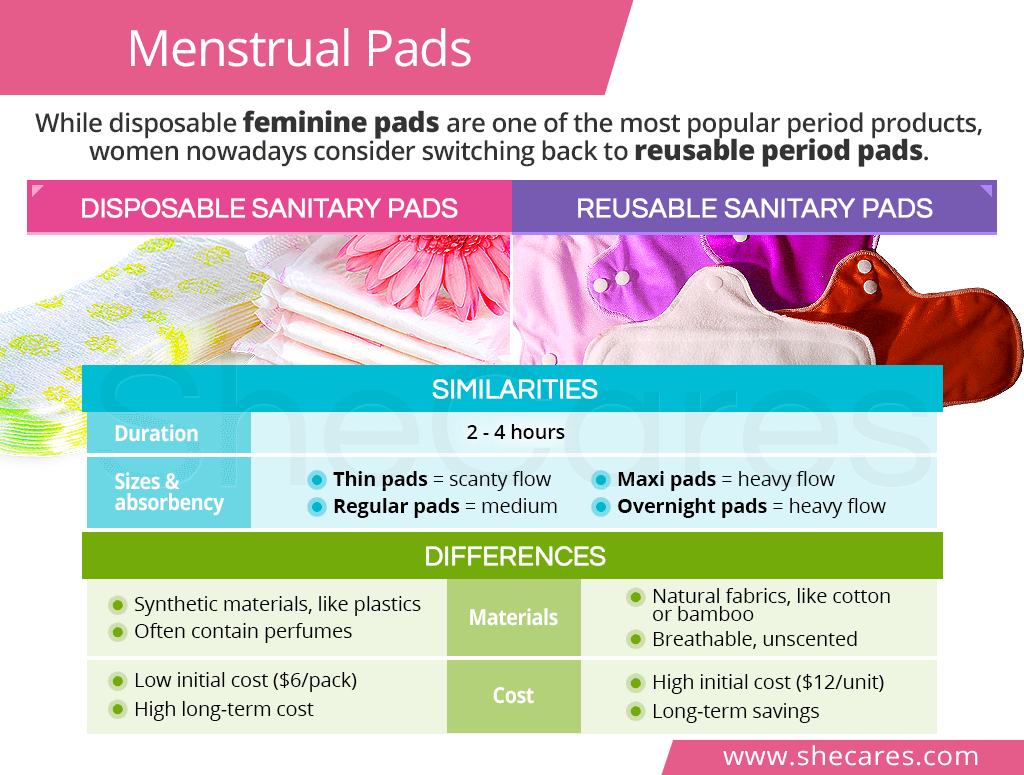What are Menstrual Pads Made Of?
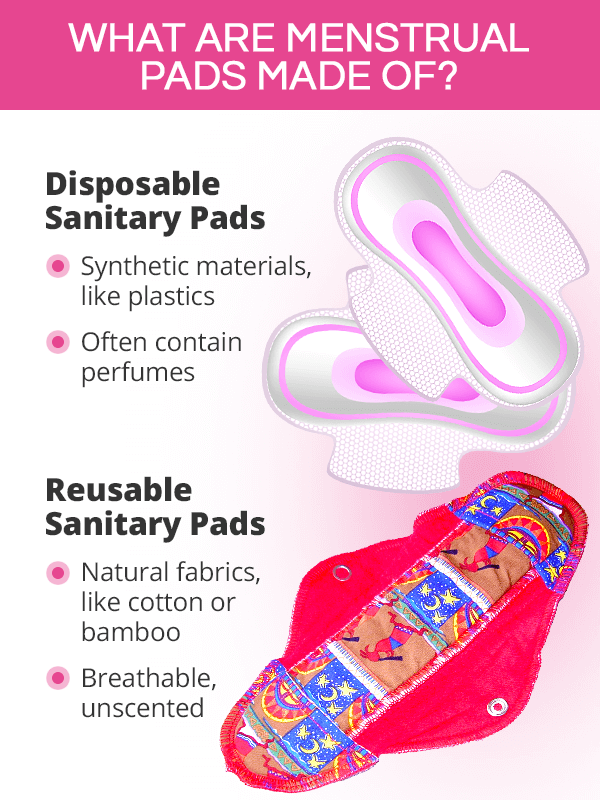
The topic of the ingredients in feminine pads is of high interest in recent years, not only in terms of their potential effects on women's health, but also environmental impact. Although various brands are making substantial improvements in terms of the materials they use, there are still significant differences between the two types.
Materials in Disposable Sanitary Pads
Most commercially available disposable menstrual pads are made with synthetic materials, such as plastics or bleached rayon, with no or little to no cotton content. Many of them are also artificially perfumed, which may cause irritation or allergic reactions.
Several brands do produce disposable organic pads made with compostable cellulose or unbleached cotton, which decompose much faster than synthetic ones and cause less environmental pollution.
Materials in Reusable Sanitary Pads
Washable or reusable feminine pads, on the other hand, are made with natural fabrics, including cotton, bamboo, or hemp, which are softer and more breathable materials. Since they do not contain synthetic constituents, washable pads are considered environmentally-friendly.
It is worth keeping in mind that some cloth pads may be covered with polyurethane laminate (PUL) for waterproof protection, which - although a little more ecological - is not completely biodegradable.
What are the Sizes and Pads’ Absorbency Levels?
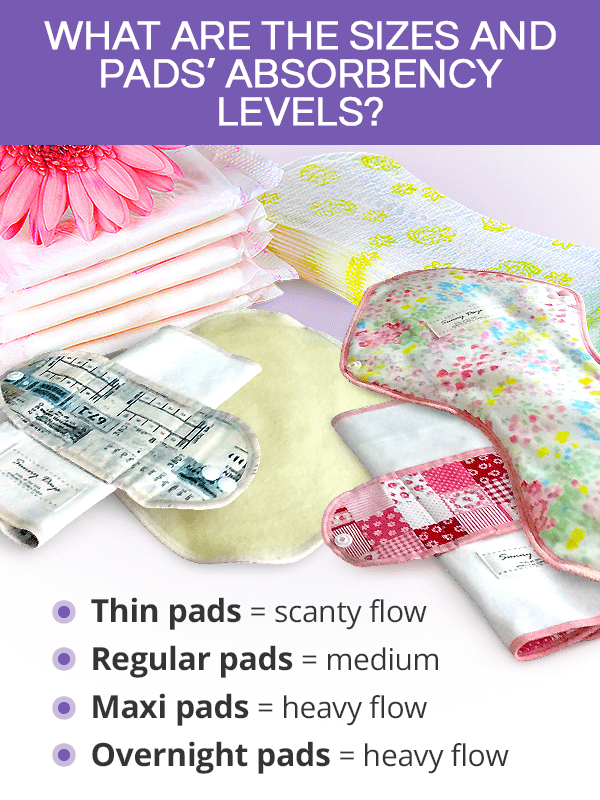
In terms of sizes and pads' absorbency, there are no significant differences between the types of menstrual pads.
Since women's menstrual flows vary, both disposable and reusable sanitary pads come in several standard sizes and levels of absorbency. Generally, the larger the pad is, the more moisture it can absorb. They are as follows:
Thin pads are generally smallest in size and can be used in the last few days of a period when the flow tends to be lighter. They may also offer sufficient protection for women with scanty periods (blood loss of 30 mL or less).1
Regular pads are perhaps the most popular size of feminine pads, offering mid-range protection appropriate for most women with healthy periods (40 to 60 mL of blood loss per period).2
Maxi pads are recommended for the first few days of a period, which tend to be the heaviest. They are also often preferred by women with heavy periods (blood loss above 80mL per cycle).3
Overnight pads generally are longer in size to offer maximum protection while sleeping.
Additionally, several brands offer maternity pads, which are long, thick, and absorbent to provide more adequate protection for women who recently gave birth.
How Often Should I Change a Pad?
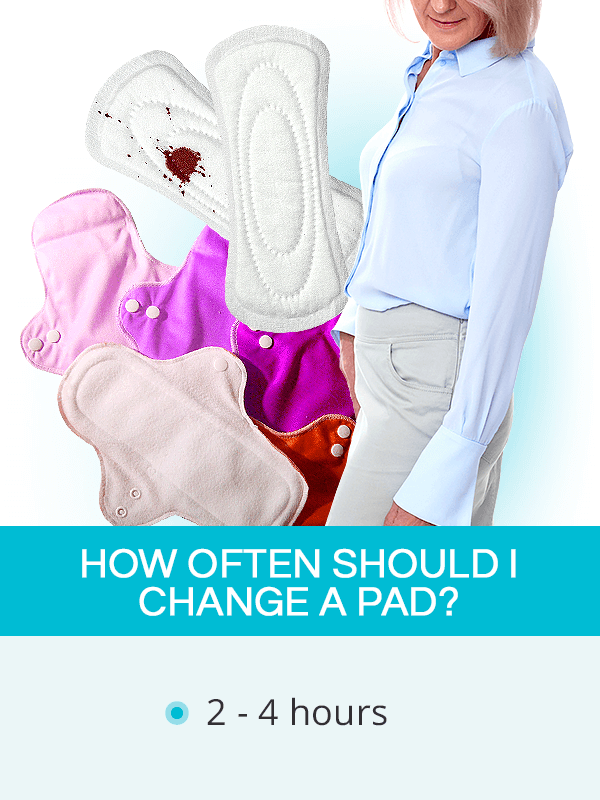
Regardless of the type of menstrual pads a woman uses, doctors recommend changing them every two to four hours, even in the case of light flow.4 Those with heavier periods may need to change them more frequently to prevent leaks. Unlike tampons, sanitary pads are safe to be worn throughout the night.
Changing feminine pads within the recommended time frame is a key component of proper menstrual hygiene. It prevents an accumulation of blood, which may lead to a buildup of bacteria and subsequent infections. It will also help women pass through their menses feeling clean and fresh by preventing unpleasant odors or accidental leaks.
What’s the Average Cost of Sanitary Pads?
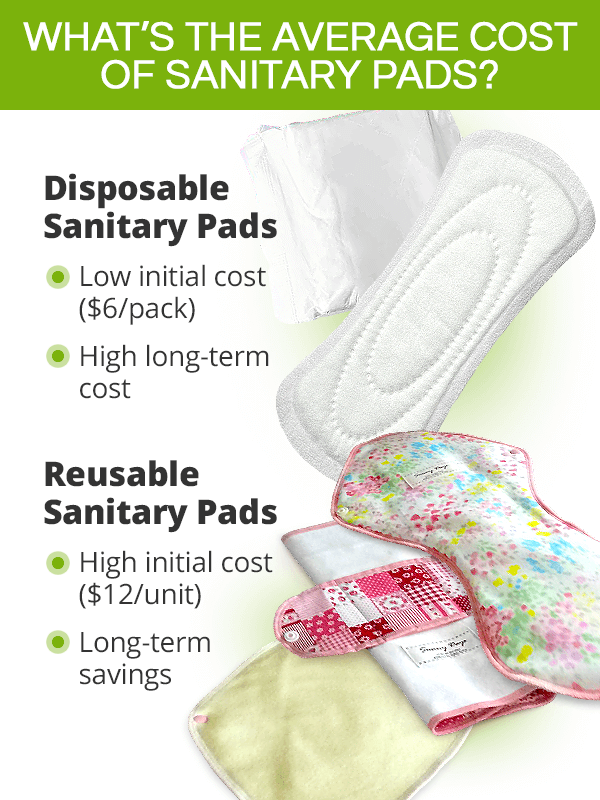
Besides ecological pollution, price is one of the most common reasons why women consider switching to washable pads.
Depending on the brand, materials used, and absorbency level, a pack of 18 disposable sanitary pads costs around $6. If women are changing pads as frequently as recommended, they may go through the whole pack per period, or more in the case of heavy periods.
Reusable period pads, on the other hand, are a larger initial investment, averaging about $12 each. Because it takes time to wash them, women typically need several of them per period, which adds to the initial expense. However, good quality washable pads can least for up to two years, thus offering savings long-term.
Key Takeaways
Virtually all menstruating women have used menstrual pads at some point in their lives, even if they later switched to another type of period product. Disposable sanitary pads are the most popular commercially available type of pads, although washable pads are also rising in popularity. When choosing between the two types, there are two key differences to consider: the ingredients they made from – with disposable pads containing synthetic materials and washable pads made with natural fabrics – as well as the cost. Disposable pads are cheaper per period, but more expensive in the long run; washable pads cost more initially, but offer savings long-term. Finally, in terms of available sizes, levels of absorbency, and their duration, there are no substantial differences between the types. This presents women with decent choices to pass through their menstruating days with comfort and peace of mind.
Sources
- Environmental Public Health. (2018). Menstrual Hygiene, Management, and Waste Disposal: Practices and Challenges Faced by Girls/Women in Developing Countries. Retrieved May 19, 2020 from https://www.ncbi.nlm.nih.gov/pmc/articles/PMC5838436/
- Planned Parenthood. (n.d.). How do I use tampons, pads, period underwear, and menstrual cups? Retrieved May 19, 2020 from https://www.plannedparenthood.org/learn/health-and-wellness/menstruation/how-do-i-use-tampons-pads-and-menstrual-cups
- New Zealand Family Planning. (n.d.). Period Products. Retrieved May 19, 2020 fromhttps://www.familyplanning.org.nz/advice/periods/period-products
Footnotes:
- Clinical Methods. (1990). Abnormal Vaginal Bleeding. Retrieved May 19, 2020 from https://www.ncbi.nlm.nih.gov/books/NBK282/
- InformedHealth.org. (2009). Heavy periods: Overview. Retrieved May 19, 2020 from https://www.ncbi.nlm.nih.gov/books/NBK279294/
- Clinical Evidence. (2012). Menorrhagia. Retrieved May 19, 2020 from https://www.ncbi.nlm.nih.gov/pmc/articles/PMC3285230/
- The University of Texas at Austin. (n.d.). Period Products: The Good, the Bad, and the Ugly. Retrieved May 19, 2020 from https://uthealthaustin.org/blog/period-products
